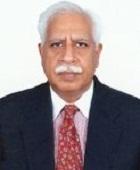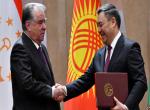On April 19, Chinese President Xi Jinping announced that a new People's Liberation Army (PLA) Information Support Force had been established. At the same time, he announced establishment of the PLA Aerospace Support Force and PLA Cyberspace Support Force and the disbandment of the PLA Strategic Support Force (SSF). Together this constitutes the largest reorganisation of the PLA since the one effected in 2016. The reorganisation comes a month after Chinese President Xi Jinping’s speech to PLA and PAP Deputies attending the National People’s Congress (NPC) session on March 7, 2024. In this speech he emphasised the importance of using emerging fields and building strategic combat capabilities. Details of the leadership or specialist functions of the Forces have, however, not yet been revealed.
Consequent to the reorganisation, the PLA now comprises 'Four Arms and Four Services'. The order of precedence for the new services, important for the hierarchy conscious PLA, was indicated in the order they were listed, namely: the PLA Aerospace Support Force, PLA Cyberspace Support Force, PLA Information Support Force and the Joint Logistics Support Force. Each of these services is now an independent entity at the Deputy Theatre Commander-level reporting directly to the Central Military Commission (CMC). They all have single missions and are focussed on one aspect of warfare, which would be intended to make command and control, as well as their performance, more effective.
There are various reasons for the reorganisation. The capital-intensive PLA Strategic Support Force encompassed a wide range of varied aspects of modern hi-technology warfare capabilities and this probably made it difficult for the PLA SSF Commander to pay adequate attention to the individual specialised forces under his command. At a time of rapid advances in military technology and battlefield tactics evolving on the battlegrounds in Ukraine and the Middle East, which the PLA leadership has been studying and analysing very carefully, this would be an impediment for the PLA in becoming a world class military capable of fighting and winning wars. As the conflicts in Ukraine and the Middle East have also shown, the battle of perception has become very important in present day warfare to win popular support and influence outcomes. Information warfare and shaping the scenarios have been noticeably prominent and, to large degrees, successful in both these conflict zones. The current reorganisation of the SSF will ensure focussed attention, proper allocation of resources, and better utilisation of funds for each Force. It will additionally ensure that trained officers are available for each Force. Since each Force is specialised, it can be expected that the separate Forces will formulate their own recruitment criteria and establish their own training establishments so that professionally competent personnel are available.
The composition of the PLA Information Support Force, as discernible from available information, indicates that its main functions would include communications, including satellite communications, analysis of the battlefield environment and target data, shaping the battlefield environment and the maintenance, disruption and monitoring of cyber and communications channels. Many of the entities integrated into the Information Support Force are from the Strategic Support Force.
Available information shows that the agencies integrated into the PLA Information Support Force include the: Headquarters of the former Strategic Support Force and the Information and Communication Base, which used to be the primary unit responsible for command communication and information support across the military. The Information and Communication Brigades of the Xinjiang and Tibet Military Districts comprising the 6th Information Support Brigade (Urumqi); 1st Communications Regiment (Urumqi); 2nd Communications Regiment (Urumqi); and the Tibet Military Region Communications Corps. The Target Data Battalion; Battlefield Environment Battalion; Communications Support Battalion; Spectrum Control Battalion; and the Intelligence Analysis Centre of the Joint Staff Department (JSD) of the Central Military Commission (CMC). Certain functions and capabilities from the Battlefield Situation and Strategic Early Warning Sub-Centres of the Joint Operations Command Centre of the Central Military Commission, as well as the Battlefield Situation Battalion, Information Service Battalion, and Command Operations and Maintenance Battalion of the Theatre Command Joint Operations Centres, have also been integrated. Furthermore, some forces from the 35th Base and the Satellite Communications Centre of the former Strategic Support Force, along with the Battlefield Environment Research Institute and the Network Information Research Institute of the Systems Engineering Research Academy of the Academy of Military Sciences, are now part of the Information Support Force.
A military expert has suggested that among these, the ‘Battlefield Environment Battalion’ is probably the Central Military Commission (CMC) Joint Staff Department Battlefield Environment Support Bureau. This was formed in 2016 with the merger of the Mapping and Navigation Bureau, Meteorology and Hydrology Bureau, and other units.
The Communications Support Battalion and Spectrum Control Battalion could have originally been with the CMC. While under the CMC Joint Staff Department, the Communications Department was responsible for technical reconnaissance, electronic warfare, and electronic countermeasures. The Spectrum Management Brigade’s role probably includes establishing electronic warfare doctrine and deconflicting theatre-level electronic warfare operations, to include satellite jamming.
The Systems Engineering Research Academy of the Academy of Military Sciences, established in 2017, is one of the eight research institutes within the Academy and focuses on various aspects of systems engineering and related technologies. It is involved in cutting-edge research and development to support the strategic needs of the PLA. Directly affiliated to it are: the Northern Electronic Equipment Research Institute (formerly the 54th Research Institute of the Network Systems Department of the PLA Strategic Support Force) (Unit 32802) and the Military New Energy Technology Research Institute. The Systems Engineering Research Institute is a key player in advancing military science and technology within China’s defence framework.
It is probable that most personnel of these formations and units would have been retained and moved to the Information Support Force with the original units. The leadership elements would have largely been left undisturbed. The Commander and Political Commissar of the Aerospace Force and Cyberspace Force could similarly have been left in place. Unless selected from outside the erstwhile Strategic Support Force, among those likely to have been considered for appointment as Commander and Political Commissar of the Aerospace Force and Cyberspace Force are Lt. General Zheng Junjie, Lt. General Hao Weizhong and Major General Yi Jianshe and Major General Fei Jiabing. All are Deputy Commanders of the erstwhile Strategic Support Force.
According to Xinhua, speaking to the 269 PLA and PAP deputies (of the 281 PLA and PAP deputies 12 were removed on charges of corruption etc.) attending the National People’s Congress (NPC) meeting on March 7, Chinese President Xi Jinping focussed on the enhancement of strategic capabilities in emerging fields, the need to grasp the characteristics for developments in emerging fields, efficient integration of new productive forces and new combat forces, and achieving mutual enhancement. He highlighted the importance of prioritizing breakthroughs in development and ensuring the implementation of strategies and plans for building strategic capabilities in emerging fields.
Six PLA deputies from various military sectors presented their suggestions at the meeting. The issues raised by them reflected the PLA’s areas of interest. These were: advancing maritime situational awareness capabilities, enhancing cybersecurity defence capabilities, promoting the application of Artificial Intelligence, strengthening the coordination and management of space resources, standardizing the development of emerging field standards, and innovating the construction and application of unmanned combat forces. These subjects were all touched upon by Xi Jinping.
Xi Jinping stressed the importance of innovation and said that the development of emerging fields fundamentally relies on technological innovation and application. He advocated enhancing confidence in innovation, promoting independent and original innovation, and fostering a vibrant ecosystem for innovation. Xi Jinping also emphasized the need to prioritize reform in emerging fields as a key aspect for further comprehensively deepening reform. He called for building an innovative ecosystem that is self-reliant, open, integrated, and dynamic, and improving the overall efficiency of developing emerging fields. This, he pointed out, required establishing and improving systems and mechanisms for processing demand, planning coordination, and resource sharing, advancing standardisation, and enhancing the overall benefits of the development of emerging fields.
Additionally, he emphasised accelerating the development of new combat capabilities, deepening reform of the national defence science and technology industry system, optimizing the structure of the national defence science and technology industry, and establishing mechanisms for agile response and rapid transformation of advanced technologies to adapt to the development of emerging fields. Xi Jinping called for updating ideological concepts, boldly innovating and exploring new models of construction and application of new combat forces, and fully liberating and developing new combat capabilities.
Xi Jinping pointedly stressed it is important to "integrate preparation for maritime military warfare, safeguarding of maritime rights and development of the maritime economy". On the side-lines of the NPC session, Yuan Huazhi, Political Commissar of the PLA Navy and NPC Deputy, told the Hong Kong Commercial Daily (March 5) that China will unveil its fourth aircraft carrier soon. He said there is no bottleneck in China's aircraft carrier technologies, and the development is progressing smoothly. The appointment of General Dong Jun, a PLA Navy officer and submariner, as Defence Minister will ensure adequate funds for the Navy.
Xi Jinping also underscored the need to build a network space defence system and enhance safeguards for national network security. Alluding to Civil-Military fusion, he called for strengthening the coordinated implementation of major projects in science and technology, promoting independent and original innovation, and fostering a vibrant ecosystem for innovation. Stating that State owned Enterprises (SoEs) are playing a key role, Zhang Yuzhuo, Chairman of the State-owned Assets Supervision and Administration Commission (SASAC) of the State Council, disclosed (March 5) that investment by central SOEs in strategic emerging industries increased 32.1 percent year on year in 2023. He said the SASAC's goal envisaged income derived from strategic emerging industries by central SOEs as accounting for 35 percent of their total income by 2025. He said it is important to increase investment in industries "especially in brain-like intelligence, quantum information and controlled nuclear fusion." It is clear that Xi Jinping will lay considerable emphasis on technology in the PLA.
The reorganisation has implications for China’s neighbours. The creation of the Information Support Force will mean increased attention to enhancing satellite, signals and electronic monitoring, interception and disruption capabilities. It will probably be responsible for disinformation campaigns and will enhance its cyber warfare capabilities. There will be enhanced emphasis on Civil-Military Fusion and the synergy between Chinese Information Technology companies and the PLA will be further elevated. The Information Support Force can be expected to be under pressure to show results and it should be apprehended that cyber-attacks and disinformation campaigns against India and targets in the region will increase. The Dalai Lama’s set up would equally be a target in the present context. An important additional area of focus for the new Force will be the Maritime Domain and particularly the Taiwan Strait and South China Sea.
(The paper is the author’s individual scholastic articulation. The author certifies that the article/paper is original in content, unpublished and it has not been submitted for publication/web upload elsewhere, and that the facts and figures quoted are duly referenced, as needed, and are believed to be correct). (The paper does not necessarily represent the organisational stance... More >>
Image Source: https://sundayguardianlive.com/wp-content/uploads/2024/04/TSG_BR-Deepak.jpg











Post new comment